Every year, we survey the indie author community to discover and share the latest information on how authors are doing.
This year we had over 2,000 respondents to our survey! This is our biggest sample ever, and gives us a better understanding of how authors as a whole are doing. Thank you to everyone who participated.
Whether you’re an aspiring author seeking insights, or an industry veteran curious about the trends shaping independent publishing, this comprehensive analysis will provide an overview of how authors are working in 2023.
Keep reading or click below to jump to a section and see what we learned!
How are authors published?
Results
The vast majority of authors surveyed are self-published with 76% saying they publish their own titles.
Analysis
It’s not surprising that our sample is dominated by self-published authors. First, we know these authors are the majority of our audience. But self-publishing has also grown in prominence over the last 10 years.
Gone are the days of self-publishing being looked down on. Yes, you can still find some stick-in-the-muds, like you can with anything, but the default posture is no longer one of condescension.
Indie authors have been around long enough to cultivate massive followings and mainstream success. These days when a reader is choosing a book, “which publisher put this out?” is the last question on their mind.
What it means for you
If someone condescends to you for self-publishing, be confident that they are officially in the wrong.
How many books have authors published?
Results
Indie authors are often very prolific with their writing. And I mean VERY prolific. On average, our respondents had published 18 books!
Now, before everyone who is working on their first novel stops reading in despair, the key word here is average. There are some long-time authors who are coming in at over 300 books that are driving this up. The median number of published titles was 8. This means that half the authors surveyed had 8 or fewer published titles, and half had 8 or more.
Analysis
8 is still a lot of published titles. Even including short stories and novellas, the level of dedication here is impressive.
Another thing we know about indies is that different genres often behave differently. For example, when looking at authors who primarily write romance, the average number of published titles balloons to 28, and the median increases to 18.
What it means for you
The incredible amount of published titles from indies should be heartening for authors across the spectrum. Remember, you aren’t competing against your fellow authors. In fact, those authors with more titles than you in your genre are only helping to generate more interest. Bottom line: indies are publishing so many books because it’s working for them creatively or financially.
How long have authors been at this?
Results
55% of respondents first published over 5 years ago with the largest single group, 28% of the total, publishing for the first time between 5-10 years ago.
Analysis
These numbers illustrate how established indie publishing is. Yes, lots of new authors are welcomed to the community each year, but we also have a significant amount of experienced authors to look to for advice and inspiration.
What it means for you
Use this data to help inform your view of our survey. It’s safe to say that all levels of publishing experience are well represented in our results.
What are the most popular primary genres to write in?
Results
There are many genres to account for here as you might expect, but we’ve pulled the top 10 from our respondents in the chart below.
Analysis
Romance is big in multiple ways. First, it’s a broad category. There are many romance subgenres that often don’t have much in common. Second, romance is popular among readers and authors. If we asked readers to pick one genre to read for the rest of their lives, it might look a lot like this chart.
Another important data point is that 83% of authors surveyed write in multiple genres. So, while this graph measures what authors view as their “primary” genre, many authors are writing in two or more genres.
It’s common to hear authors discuss which genres do best in KDP Select. So we wanted to look at the genres of authors who had all books in KDP Select vs. Authors who had no books in KDP Select. Largely, there weren’t many differences, but in the chart below we’ve called out the 3 largest differences and highlighted romance.
As you can see, Fantasy and Lit Fic authors were more likely to have no books in KU than all their titles in KU. Whereas the inverse was true for Romance and Thriller authors.
What it means for you
If you are a Fantasy or Literary Fiction author with your titles enrolled in KDP Select, it might be worth at least considering going wide. This graph absolutely shouldn’t make your decision for you, but if you’ve never thought about it, consider if the other authors in your genre are onto something.
Likewise for Thriller authors. If you are wide, consider what enrolling in KDP Select would mean for you. No, it might not make sense for you individually, but consider if your fellow thriller writers in KDP Select are doing something that you would like to join.
How do authors edit their books?
Results
Just over 60% of authors surveyed use professional editors while the next largest group edits themselves.
Analysis
Indie authors are more focused on quality than ever before. In our 2020 author survey, we found that just over 56% percent of indies used professional editors. In 2023, that number is up to 60%.
Indies understand the value of investing in an editing process that is effective. For most, this is a professional editor, for others it’s someone they already know and trust. And some are able to effectively edit themselves.
What it means for you
High-quality editing is essential to building a career as an indie author. Unless you’re one of the few who can effectively edit themselves, working with a pro is a worthwhile investment.
How much do authors pay for professional editing?
Results
55% of authors surveyed who use professional editors are spending over $500 per book. 80% are spending $250 or more.
Analysis
Editing isn’t cheap, but it’s clear authors understand the importance. Many are working with professional editors, and many of those are putting up major cash to enhance the quality of their books.
What it means for you
Not everyone can afford to drop $500 on editing, but it’s good to know what other authors are doing. Editing is an investment in your book. If you can afford it, working with a quality editor is worth the money according to indie authors.
How do authors get covers for their books?
Results
Of the authors surveyed just over 50% work with a professional designer, while 26% design their own book covers.
Analysis
Book covers sell books, so professional design is a big advantage. Similar to editing, cover design can cost a pretty penny, but the authors that can swing it are investing in their book’s success.
Of those who work with a professional cover designer, 86% are spending $100 or more per cover.
There are also a significant number of authors who are designing covers on their own, or are finding some other way to get covers. These methods, while cheaper, could be less likely to produce the same quality of results.
What it means for you
Your cover is your most important marketing asset, so if you’re going to invest in marketing, start with your cover.
If your book isn’t doing as well as you’d hoped, make sure to get feedback on your cover from readers and other authors. It’s possible that finding a seasoned design pro to rework your cover could be the best investment you’ll ever make.
How do authors feel about using AI?
Results
We asked two questions about writing books with artificial intelligence. First, would authors ever use AI to help write without using exact text generated by the AI. This could be things like help with plotting, character names, or paraphrasing text generated by AI.
71% of authors said they would never use AI for this sort of work, while 16% said they would, and 13% were unsure.
When it comes to using AI to write the exact text that is included in a book, 87% of authors said they would never, 5% said yes, and 8% were unsure.
We also asked about using AI to help create marketing assets like ad copy or images, and the results were different with 46% of authors saying they would use AI for marketing, 32% said they would not, and 22% said they were unsure.
Analysis
The skepticism around AI in the author community is real. Legal and ethical issues abound in addition to the fact that many authors love writing more than any other part of being an author. Why use AI to write when it would lessen your enjoyment?
Marketing, on the other hand, is most author’s least favorite part of being an author (more on that later), so we can see that our survey respondents are much more willing to use or consider using AI to help there.
What it means for you
AI is a red hot topic to the point where it can be hard to get a read on the community with so many emotions at play. Use these numbers to help you gauge where your fellow authors are at when it comes to AI without worrying that only the loudest voices are being heard.
It will also be interesting to see how these numbers change in the coming years.
KDP Select vs. Wide Distribution
Results
We asked our survey respondents how they handled enrollment in KDP Select, and things were pretty even. 37% had all of their titles in KDP Select, 34% had no titles in KDP Select, 18% had most titles in KDP Select, and 11% had very few titles in KDP Select.
Analysis
The KDP Global fund per-page payouts seemed to drop over the course of the summer of 2023, and it wasn’t uncommon to hear rumblings from disgruntled authors about going wide. But we don’t see a mass exodus reflected in our numbers here.
In terms of genre, Young Adult, Literary Fiction, and Women’s Fiction authors were all the least likely to have their books enrolled in KDP Select.
Erotica, Romance, Cozy Mystery, and Horror were the most likely to be enrolled in KDP Select.
What it means for you
There’s a reason this debate has persisted for so long: for some authors, KDP Select is worth it, and for others, it’s not.
While most genres are relatively evenly split between wide and exclusive distribution, the ones called out above were the largest outliers. Are you a wide Cozy Mystery author who has never tested KDP Select? It might be worth testing out to see if there’s an audience there for you. The inverse is true for Young Adult authors.
There’s no widespread “best practice” here, but it always helps to consider alternatives to what you’re already doing.
How much money do authors make?
Results
Income is largely linked to the number of books an author has published. In the graph below, you can see that as monthly income increases, the median number of published books does as well.
For authors earning between $0 and $249 per month, the median number of published titles was 5. For authors earning between $5,000 and $7,500 per month, the median number of published books was 30.
Analysis
As authors publish more books, their earning potential increases. If you have 5 published titles and sell them each for $3.99, a reader can really only spend $20 on your books. After that, they have no other way to support you.
If you have 30 titles available for $3.99, the maximum a reader can spend on your books increases to $120. Just like that, the value of your superfans has increased 5x.
But, it’s not only the number of books. We can see in the graphs that the growth in published books is not linear. Once authors are making over $5,000/month from their book sales, the median number of published titles increases less steadily.
So, it’s safe to say that authors who are high earners are combining a large number of titles with marketing expertise.
What it means for you
If income isn’t a primary driver for you as an author, that’s great. No major takeaway here! But, if you’re heavily invested in increasing your earnings, writing more books, ideally in a series, is likely the best way to do so.
It’s also important to note that author income is full of outliers. In general, writing more books is the answer, but it’s possible to increase earnings without a massive catalog. It’s just less common.
If you have a large backlist but aren’t happy with your earnings, consider investing more in marketing to make your assets work for you.
How are authors using their websites?
Results
We were curious about author websites, direct sales, and how indie authors are setting up their technology to connect with readers. So, we asked!
85% of our respondents had author websites, and, of the 15% without, 46% planned to have a website within a year.
Of those with a website, 60% built it themselves using a tool like Squarespace or Shopify, while 26% paid someone to build it.
Of those who paid, the average cost for an author website was $1,022.
Analysis
Authors know how important a website is to building readership. We’ll get more into email lists shortly, but without a website, it’s virtually impossible to build a reader mailing list. And email is the most reliable way to reach your most dedicated fans.
What it means for you
Having a website is now table stakes for authors. Consider building one if you don’t have one, or be prepared to pay a professional to do so. Your author website can help you build your mailing list and spin up direct sales. Speaking of which!
How are authors selling books directly to readers?
Results
Of authors with websites, 27% said they sell directly to readers from their site. Of those who don’t currently have direct sales, 39% planned to offer direct sales in the next year.
For authors selling direct, what tools are they using to do so? BookFunnel was the most popular service, with Shopify, Payhip, and Woocommerce also seeing substantial use.
Analysis
Direct sales for authors is trendy and gets a lot of attention, but it’s not easy to pull off. Only a little over a quarter of authors with websites are selling direct, and this makes sense.
First, the technical challenges of selling direct are major, and create challenges to even get off the ground. Setting up an online store and managing payments and delivery is a whole different level than linking to Amazon.
Second, selling direct requires owning an audience or driving traffic to your store that converts. For authors with smaller mailing lists and less interest in digital ads, the investment in direct sales likely won’t have a quick payoff. These authors are likely focusing on building their business via retailers, and will focus on direct sales when it is more likely to be profitable.
What it means for you
For authors without a direct store, you might be heartened to learn that far from everyone has been able to capitalize on the trend. And, it obviously doesn’t make sense for every author to sell direct at this time. Evaluate how a store will likely perform for you before you invest.
For authors with stores or who are considering them, it’s helpful to know some of the most common tools that are being used. They will have strengths and weaknesses and have different functions, but BookFunnel, Shopify, Payhip, and Woocommerce are all being used heavily by authors for fulfillment & payment processing.
How do authors publish audiobooks?
Results
42% of authors surveyed had published an audiobook.
Analysis
Audiobooks have been much discussed for years, and it’s true that indie authors are investing more in them. Our 2019 survey found that only 39% of respondents had published an audiobook. This year that figure is up to 42%.
Slow growth overall, but it is growth. The genres most likely to have a published audiobook?
Cozy Mystery: 55%
Mystery: 51%
Romance: 50%
Fantasy: 49%
What it means for you
Audio is expensive to produce, and we see that in the data. Before investing, consider speaking with other authors in your genre to see what their return on investment has been or what marketing has been successful for them.
If you’re in one of the genres listed above, consider what your fellow authors are doing and see if it makes sense for you to do so as well.
How do authors market their books?
The thing authors can most agree on: marketing is hard. Nearly 80% of survey respondents said it was the most challenging part of the publishing process. Second was writing the book at 11%.
We know marketing is hard, but we also know it’s important. So what are authors doing to market their books?
Results
On average, authors are spending 31 hours and $617 a month on marketing. That’s over 7 hours & $150 per week spent on promoting books!
We also asked authors to give us some information about how different author marketing tactics perform for them. Bookbub deals came in top with an average rating of 3.5 out 5. Second were Promo Sites like we offer at Written Word Media, coming in at 3.4. Emailing subscribers on your author newsletter came in third at a strong 3.3.
We also asked authors to tell us about the perception of marketing tactics.
Most overrated? In-person events. Most underrated? Your author newsletter.
Analysis
There’s a wide spectrum here, but the number that catches my eye the most is that authors, on average, are essentially dedicating one week a month to marketing their books.
There’s also a large difference between how much authors are spending per month on marketing. The average monthly budget was $617, but as you would expect, few authors on the lower end of the earning spectrum are spending that much.
Authors with high marketing budgets tend to be high earners and have more published books. They also have different views on what the most effective marketing tactics are.
Of authors spending less than $1,500 per month on marketing, 13% rated Facebook Ads as the most overrated marketing tactic. For authors spending over $1,500 only 3% rated Facebook Ads as most overrated.
Amazon Ads saw a similar trend, though less pronounced.
It makes sense if you’re a high spender, Facebook ads are likely to account for a large portion of your budget. But it’s also clear that some authors are able to scale their spending on large ad platforms.
What it means for you
Is there a highly-rated marketing tactic that you don’t do? Give it a try if you can. Is there a lower-rated one that does work for you? Why is that? What can you learn from this to help improve your marketing.
BookBub Deals and Email Promos being rated as highly effective could inform your marketing strategy. Are you using these as much as you can? If your experience with them hasn’t been as positive, why is that? Is there anything you can do to make them work?
If you want to scale your ads on Amazon and Facebook and you have a larger number of published titles, know that this is possible. If you can’t get the ads to work the way you’d like, it might be worth hiring an expert to maximize your marketing potential.
What prices do authors charge for their books?
Results
We asked authors how much their most expensive eBook was. The largest group was 26% of authors saying their most expensive eBook was set at $4.99 USD. Over 79% of authors had an eBook priced at $4.99 or over.
We also asked authors for their least expensive eBook, and free and $0.99 USD were the largest groups. Almost 50% of authors had their least expensive ebook set at free or $0.99.
Analysis
These numbers reflect what we already know about indie author pricing strategies. Having a title, typically a first-in-series, priced at $0.99 or free is a common tactic to hook readers with a low barrier to entry before charging a higher price on books 2 and 3 after a reader recognizes the quality of the author.
We also broke these numbers down by KDP Select enrollment.
Of authors with all of their titles in KDP Select, 30% had a $0.99 book, and 10% had a free book at the time of taking the survey.
Of authors with no titles in KDP Select, 16% had a $0.99 book and 34% had a free book.
This shows that authors enrolled in KDP select are likely doing more price changes by running Free Days and Kindle Countdown Deals than wide authors.
Wide authors don’t have access to Free Days, so they are more likely to make a book perma-free. Wide authors clearly see the value of having a free title to easily promote with services like our ready-made promo stacks, so they’re more likely to have a free title than a $0.99 title.
What it means for you
Free promos work for a lot of authors. If 25% of authors had a free title at the time of taking the survey, undoubtedly many more still occasionally drop their prices to free.
If you haven’t run a free promo in a while, it might be a good thing to consider.
The Author Sample
This year we had over 2,000 authors complete our annual survey. Our largest sample ever! Thank you to everyone who took the time to share insight into their author journey. Without your help, we would not have this valuable data to share with the indie author community.
Conclusion
There you have it! The 2023 author survey results. I hope this data is helpful as you plot your course through the wide world of publishing.
Please do keep in mind that while this is a large sample of authors, not every author is the same. Instead, I encourage you to use this information as a jumping-off point. Did you learn that other authors are doing something you’re not? It might be good to try it.
Everyone and every book are different, and that’s what makes authors such a wonderful group of creative thinkers.
Let us know what surprised you or caught your eye in the comments below. Thanks for reading!
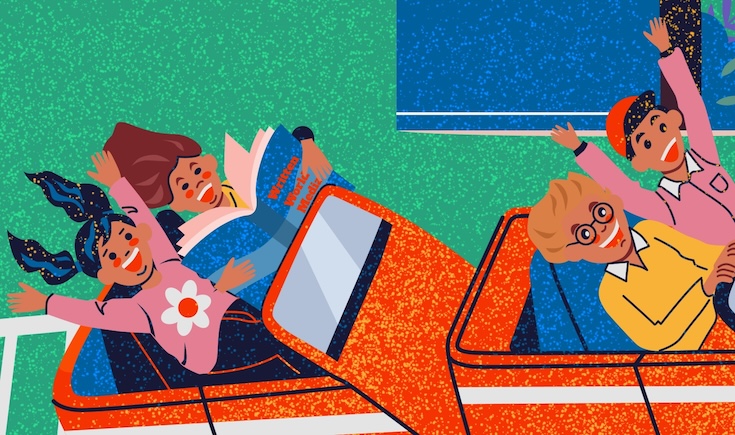
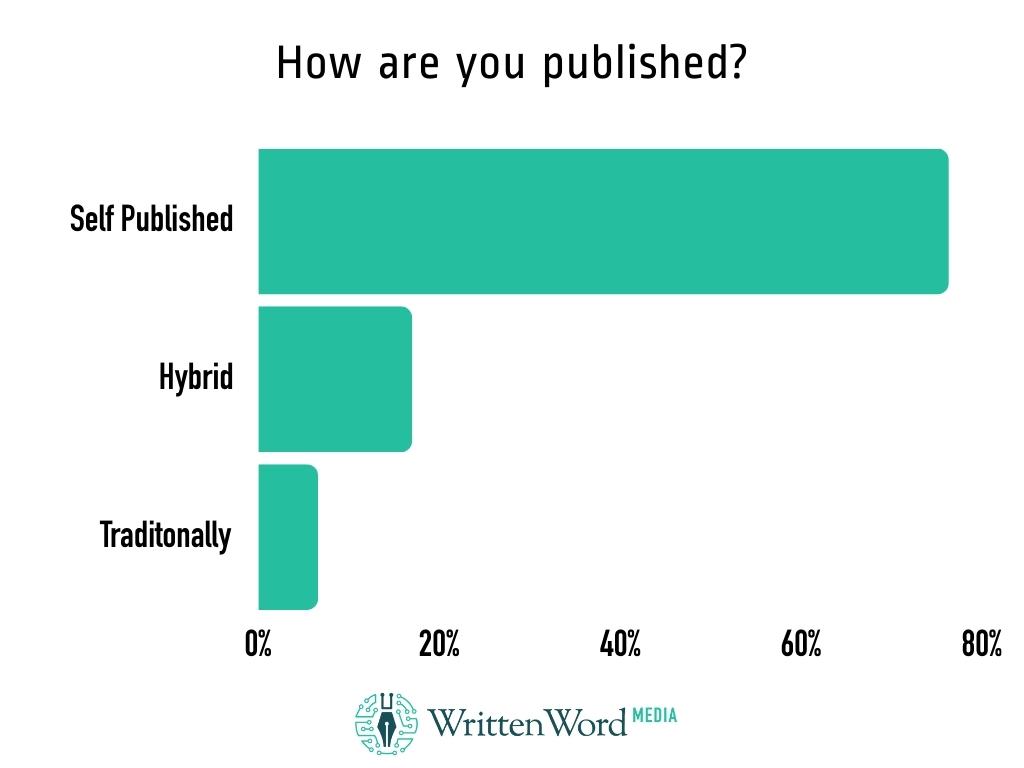
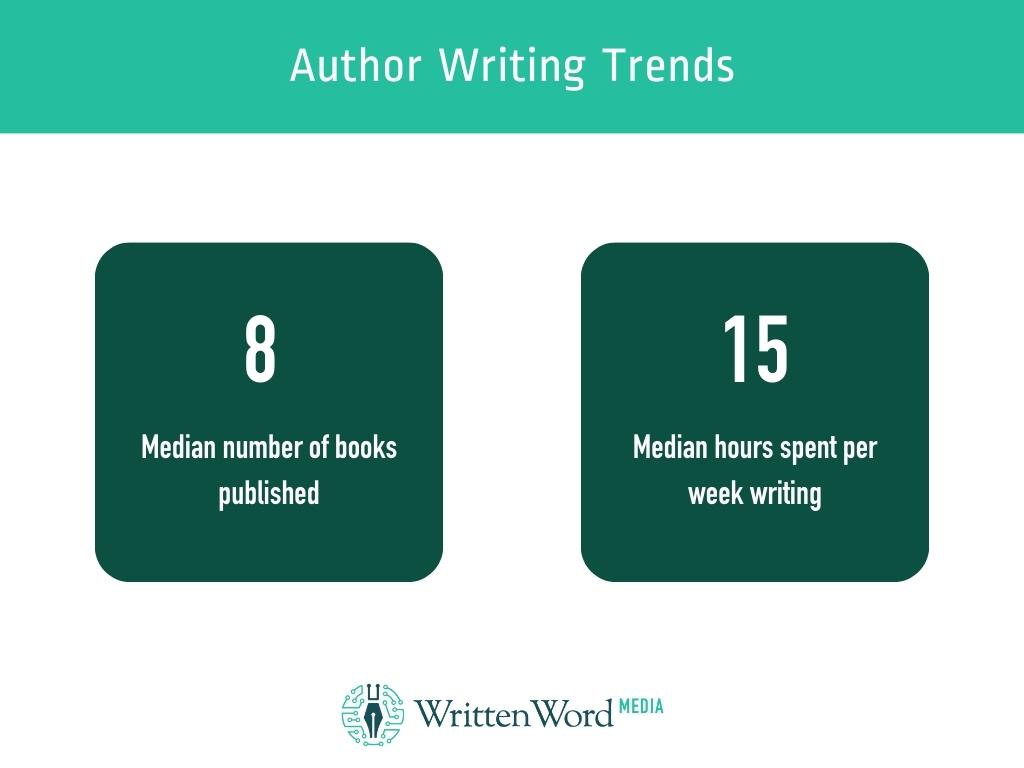
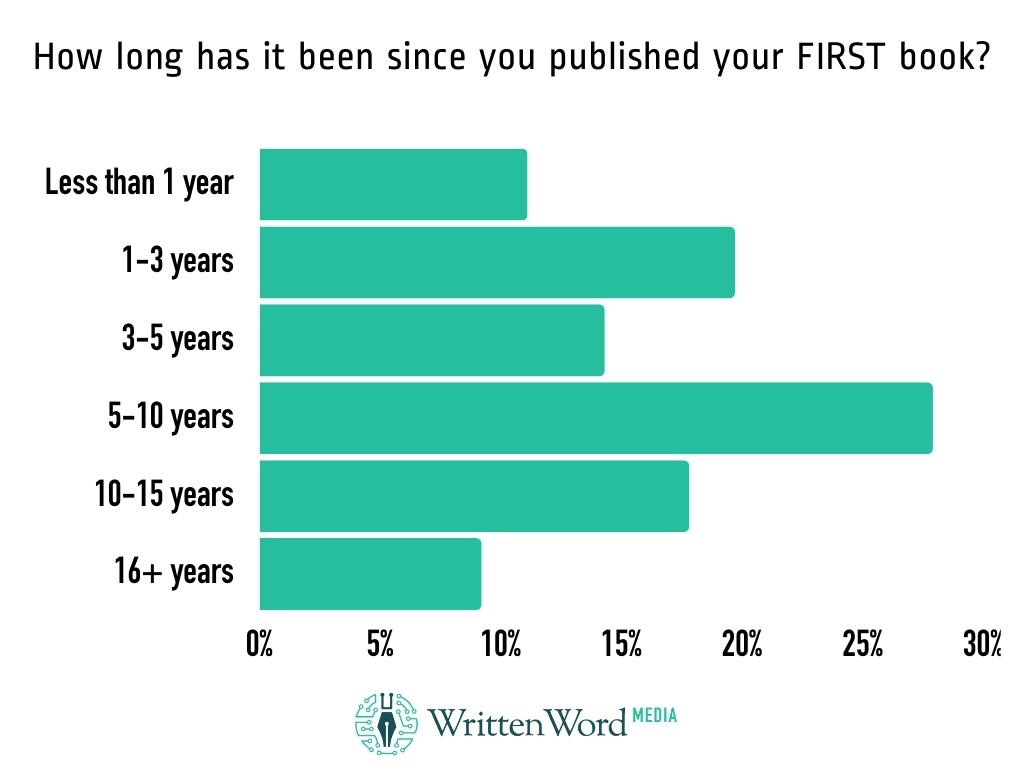
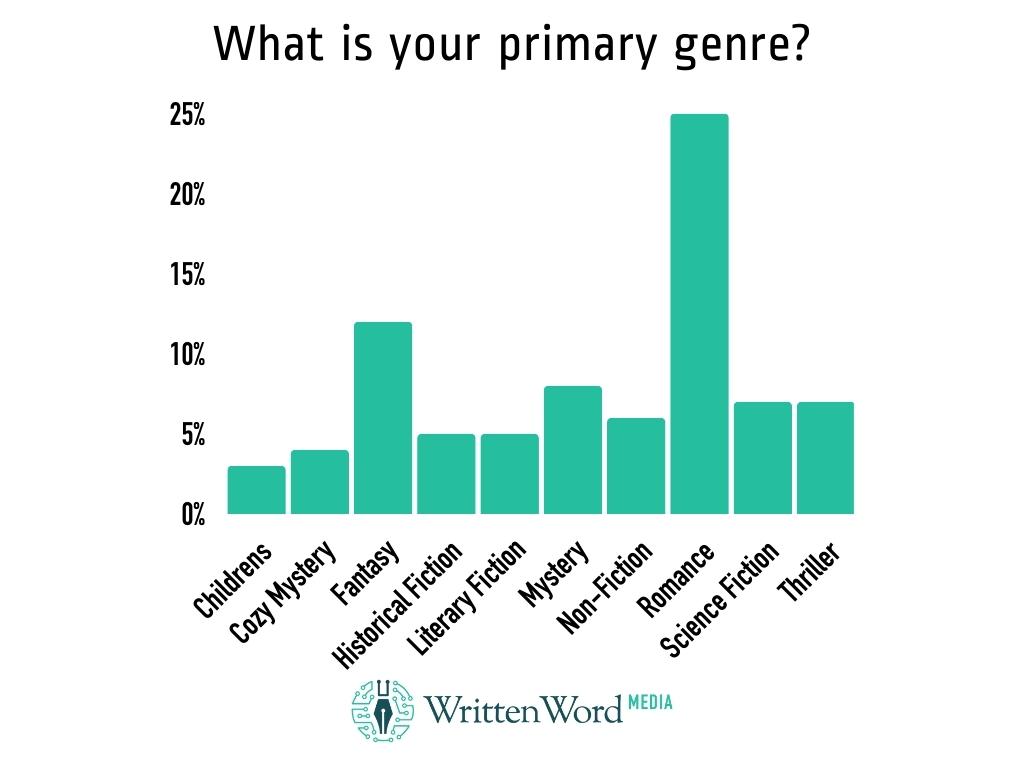
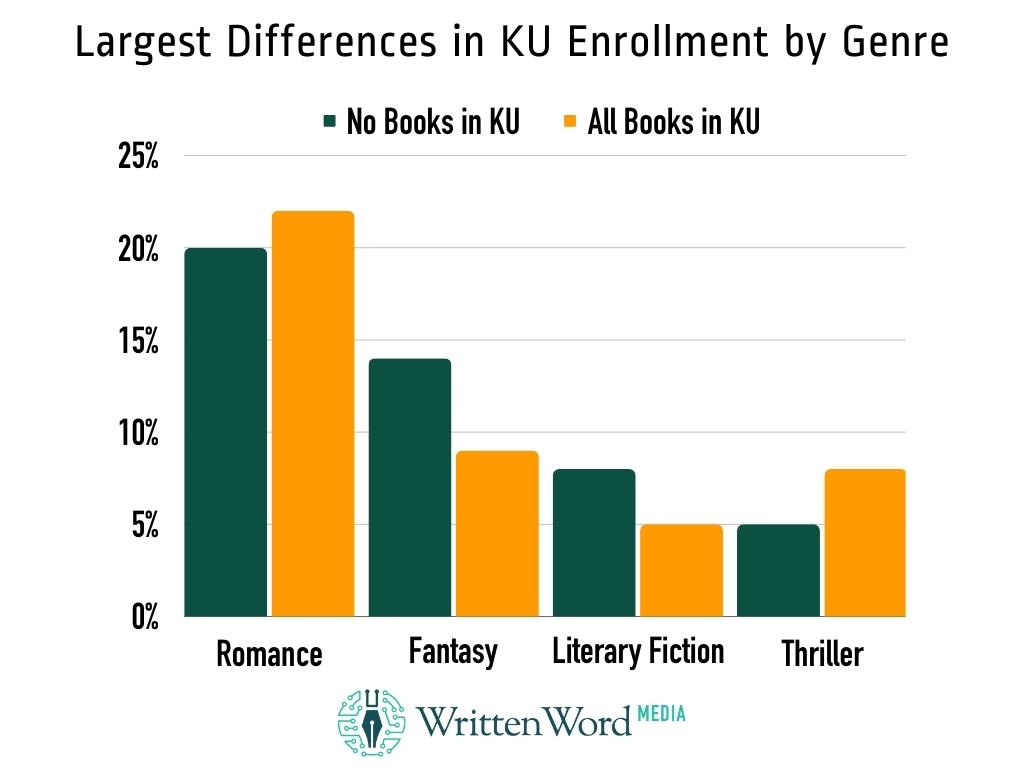
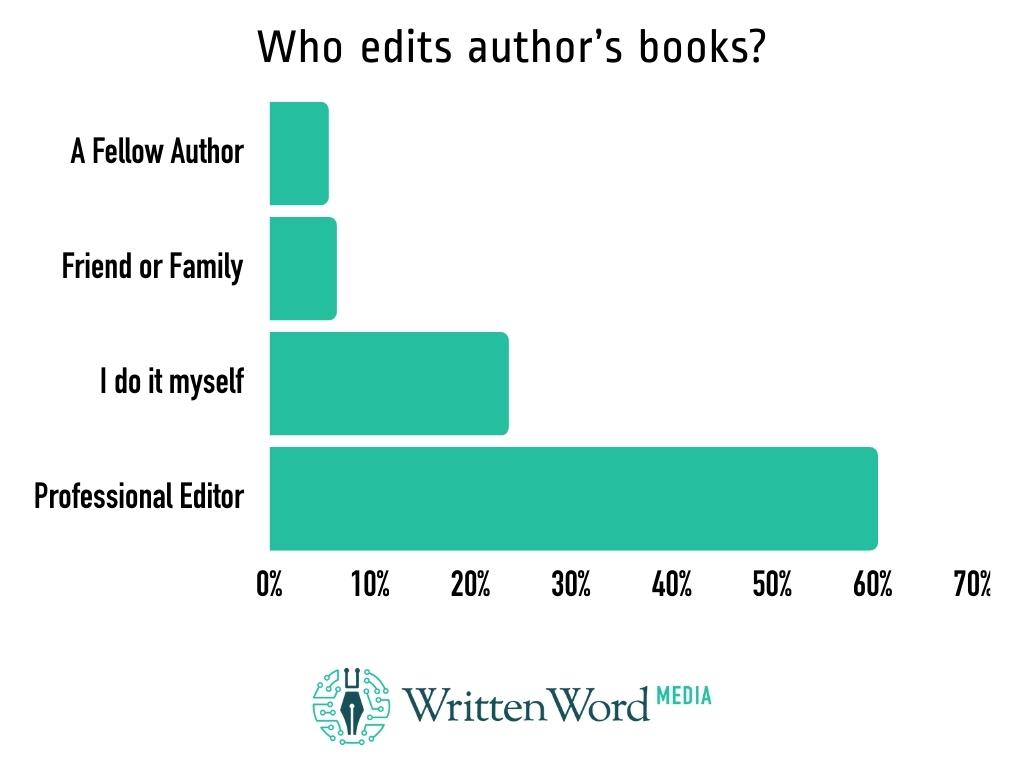
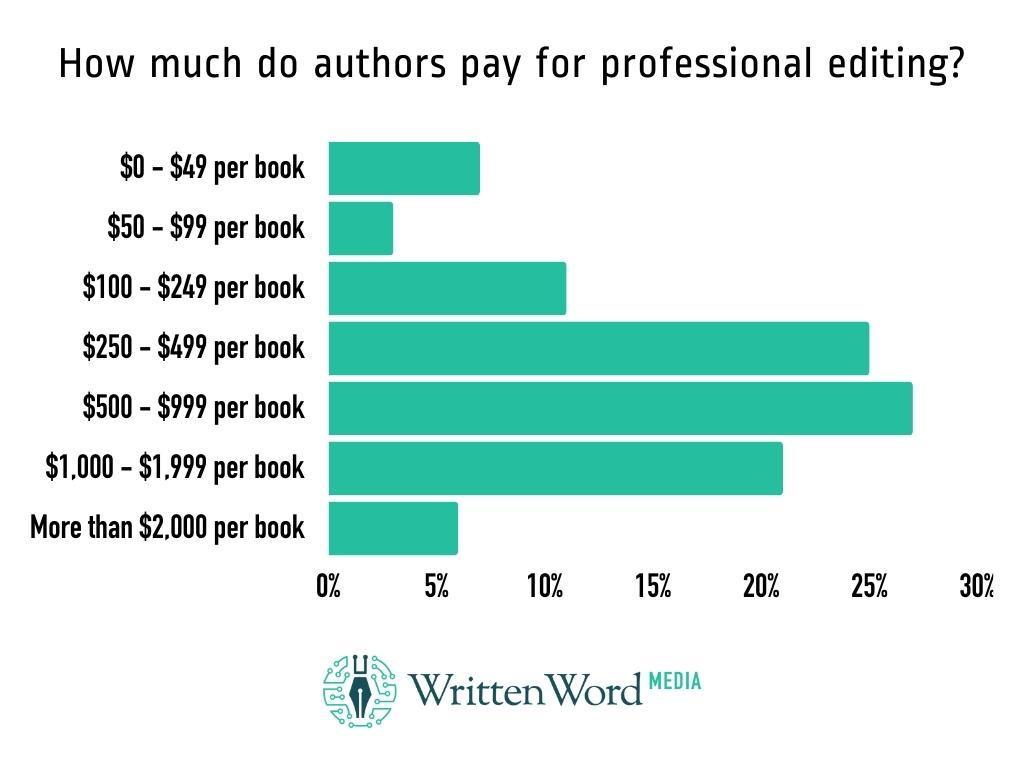
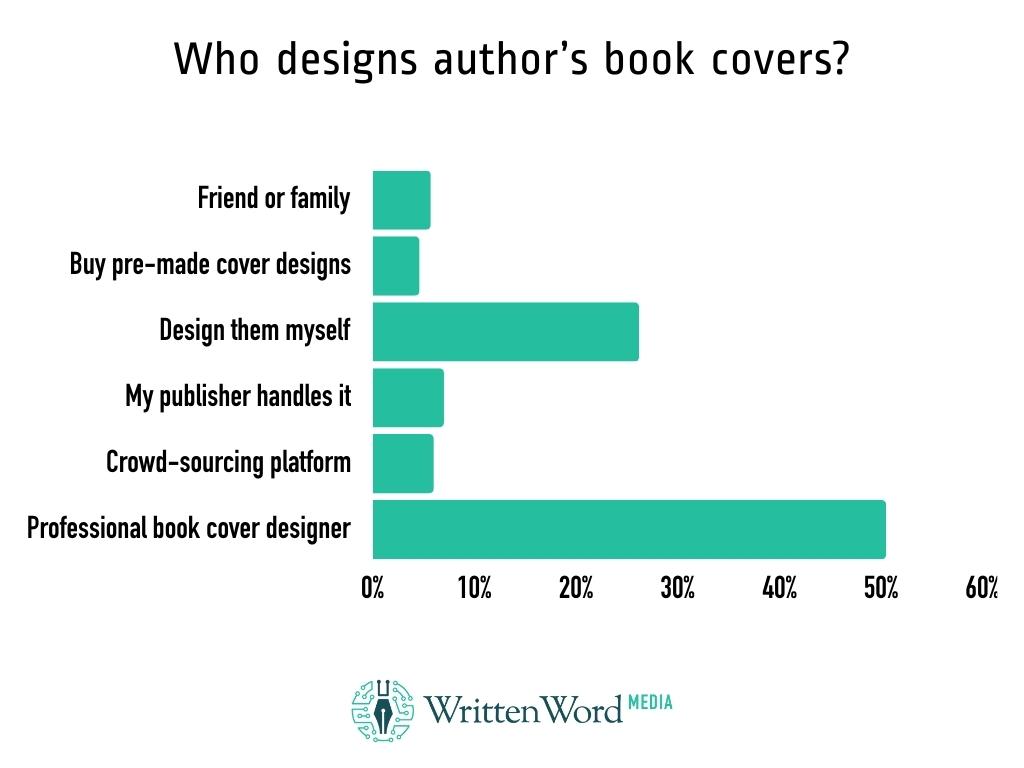
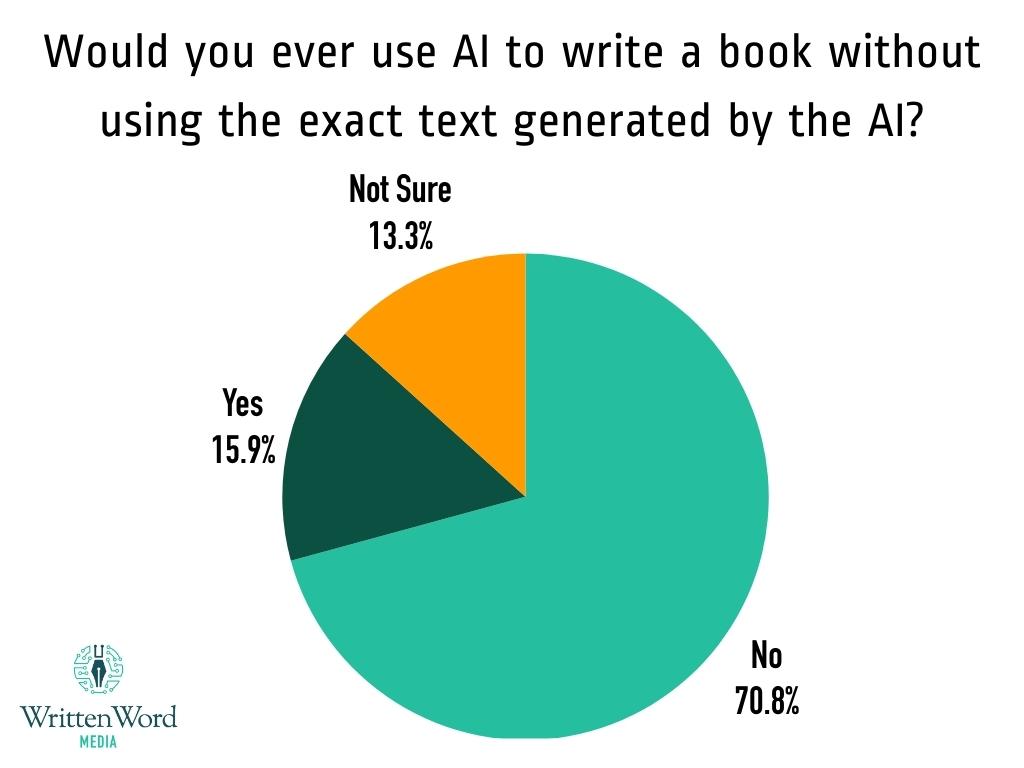
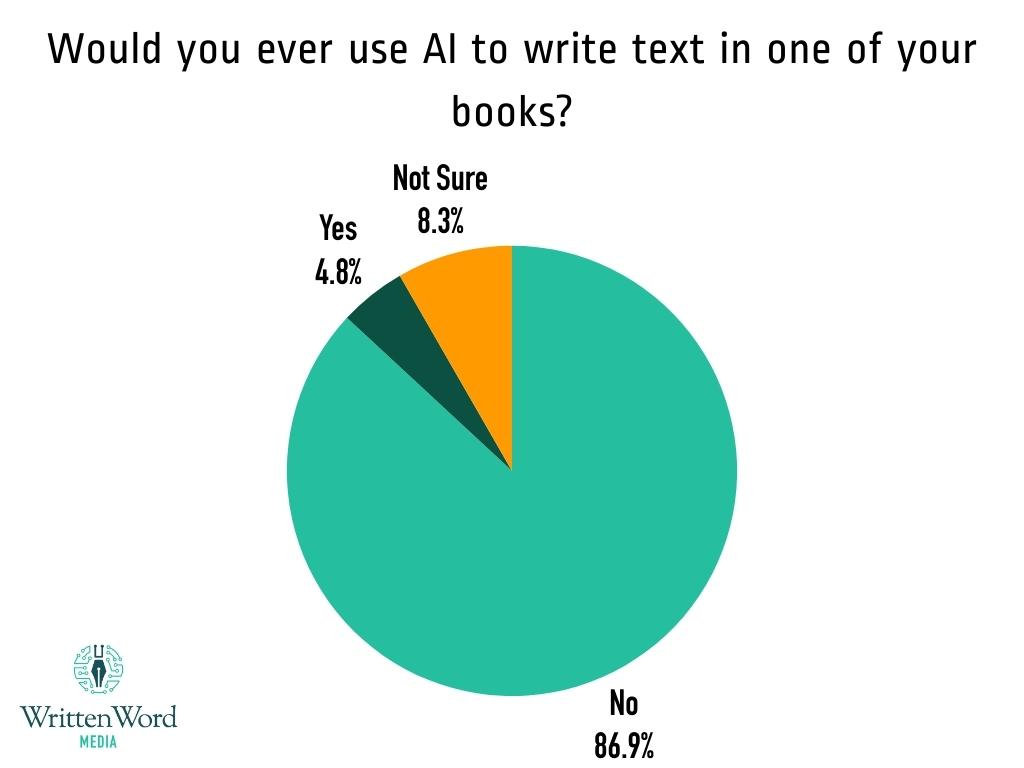
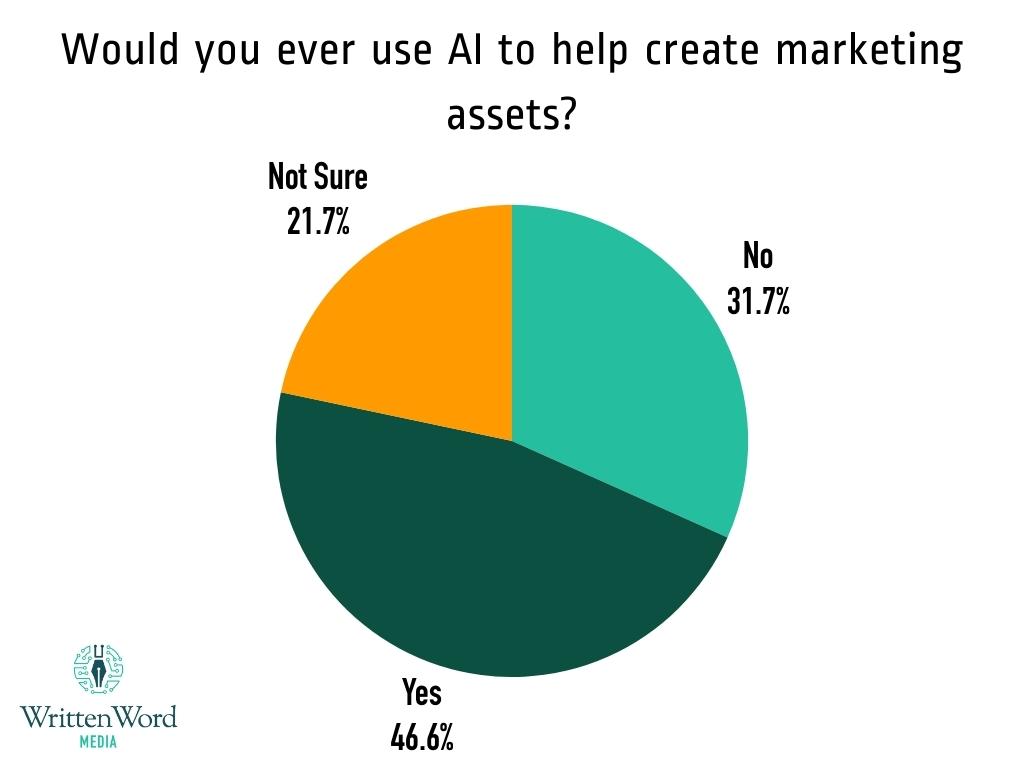
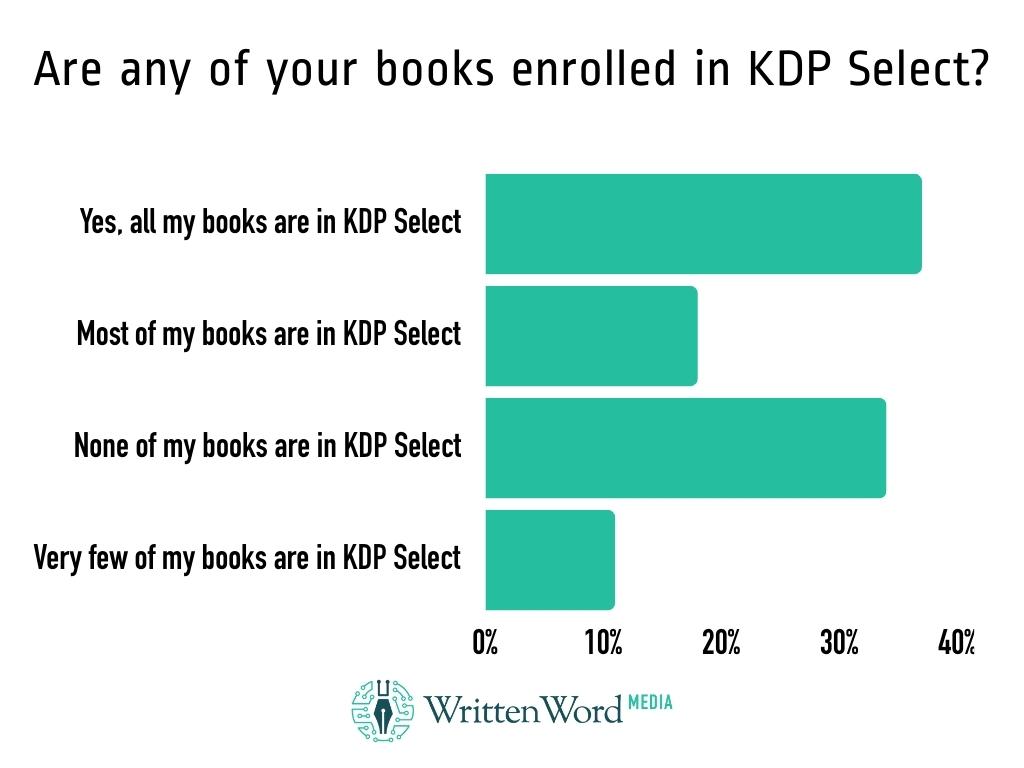
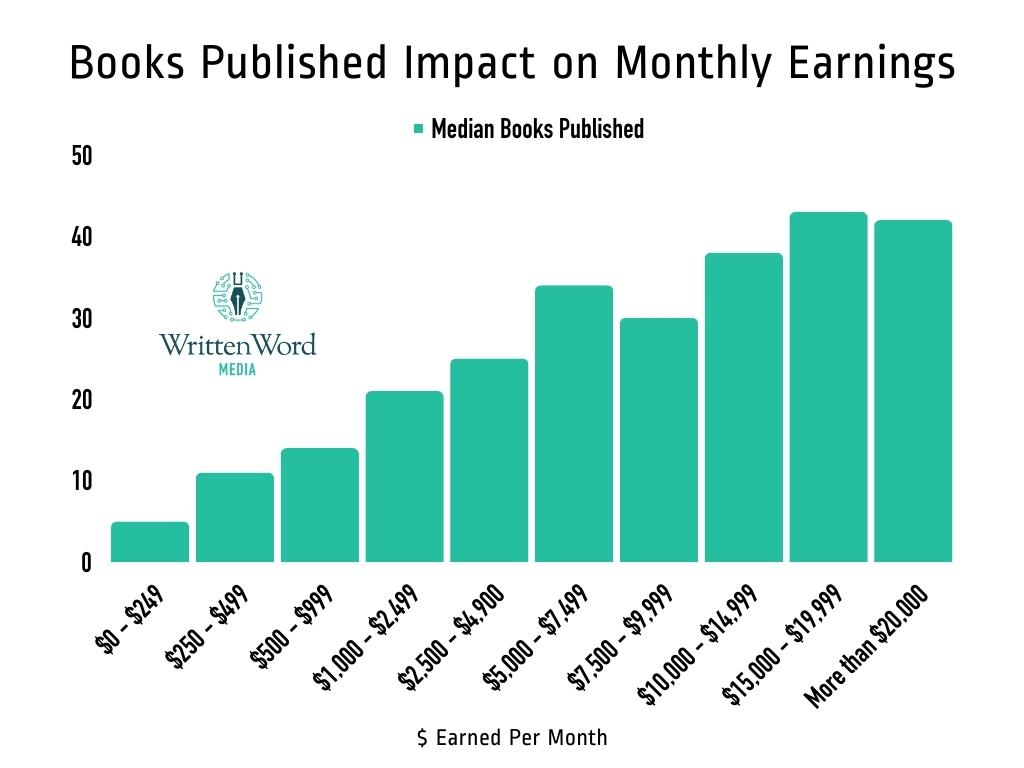
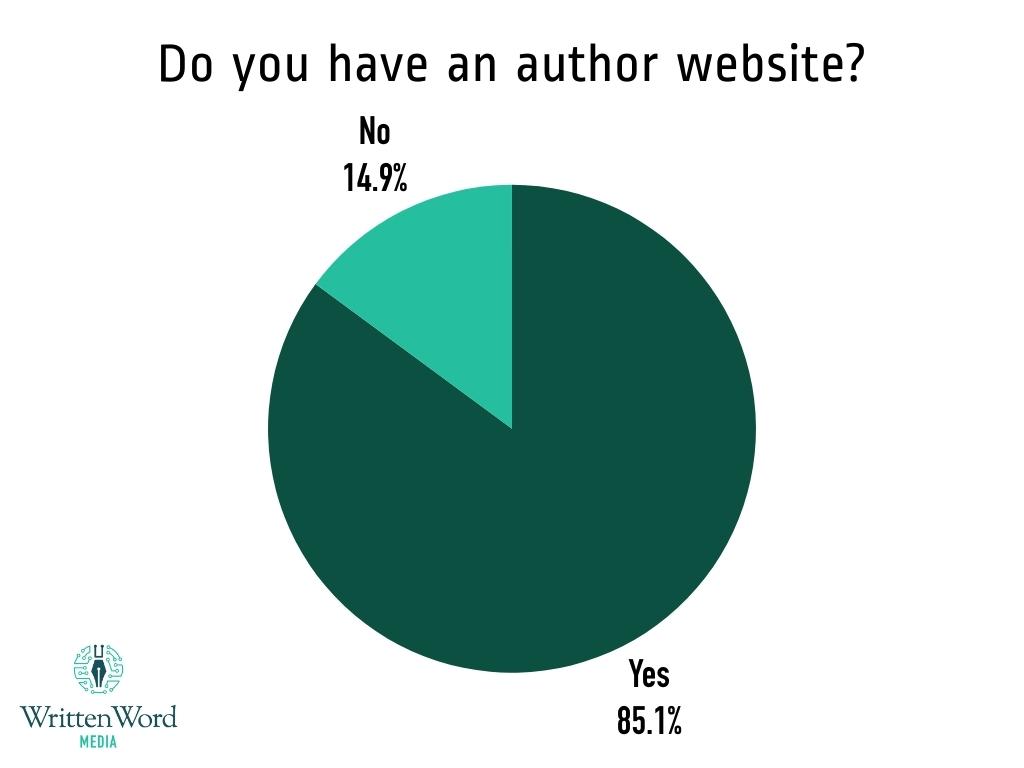
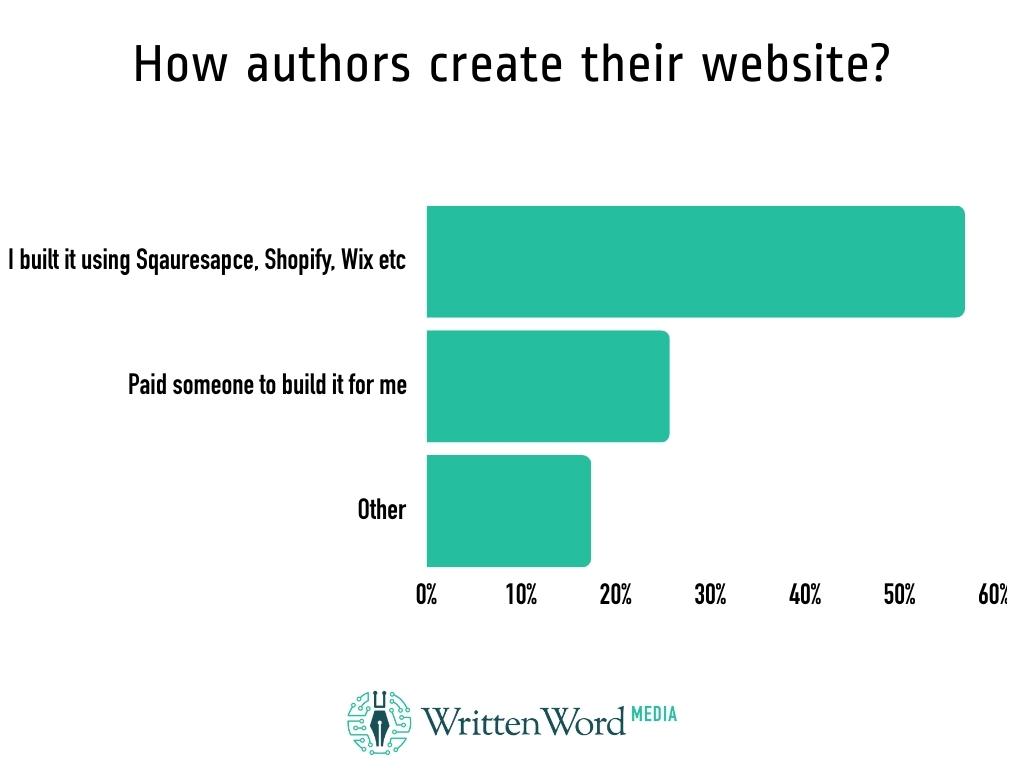
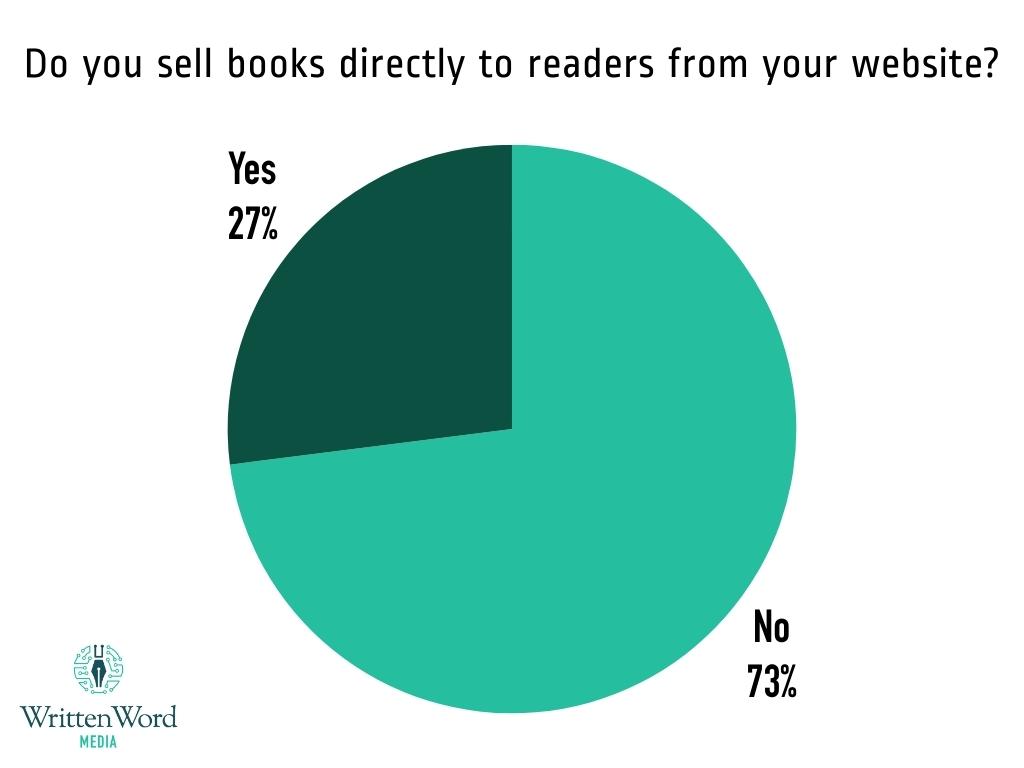
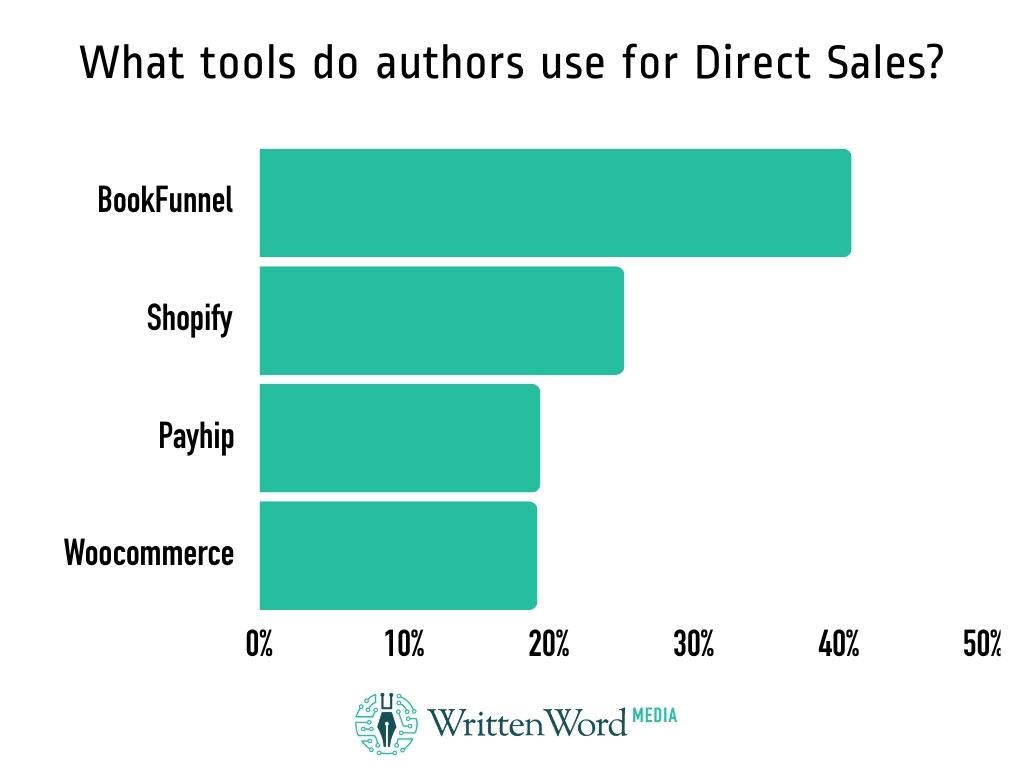
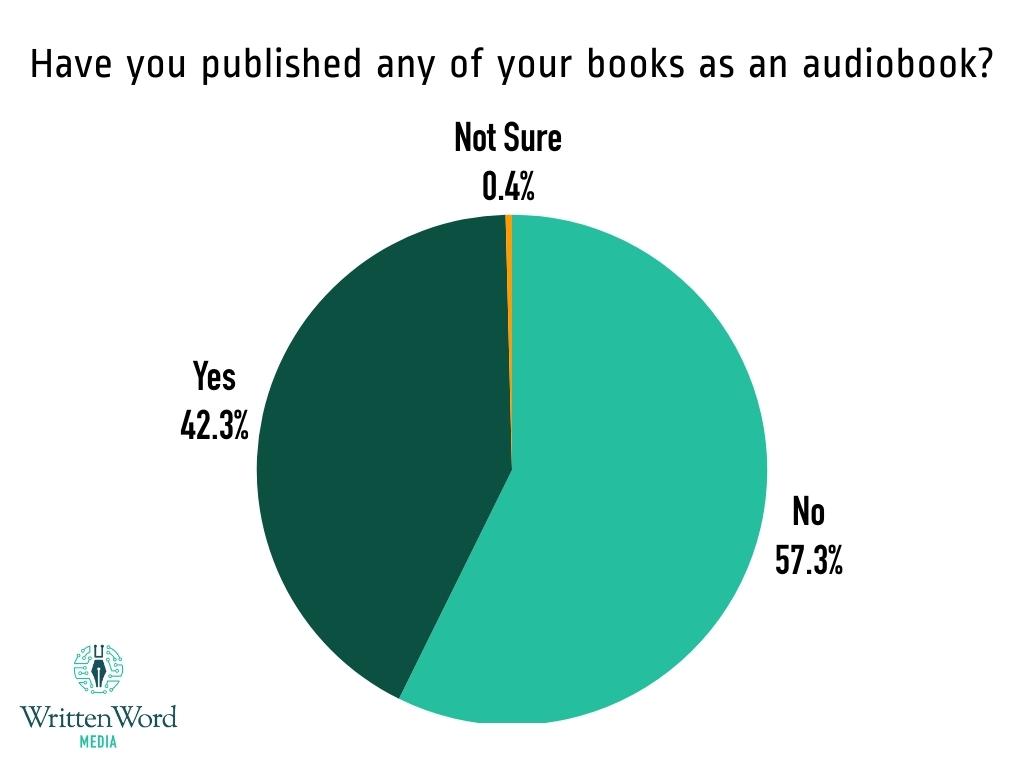
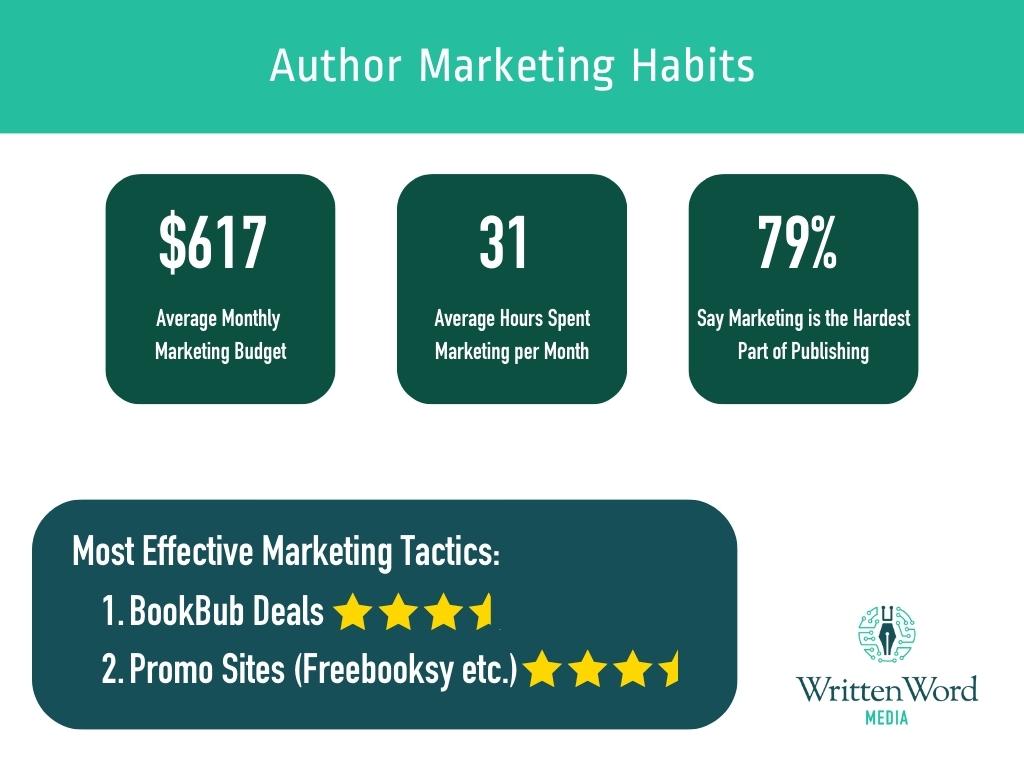
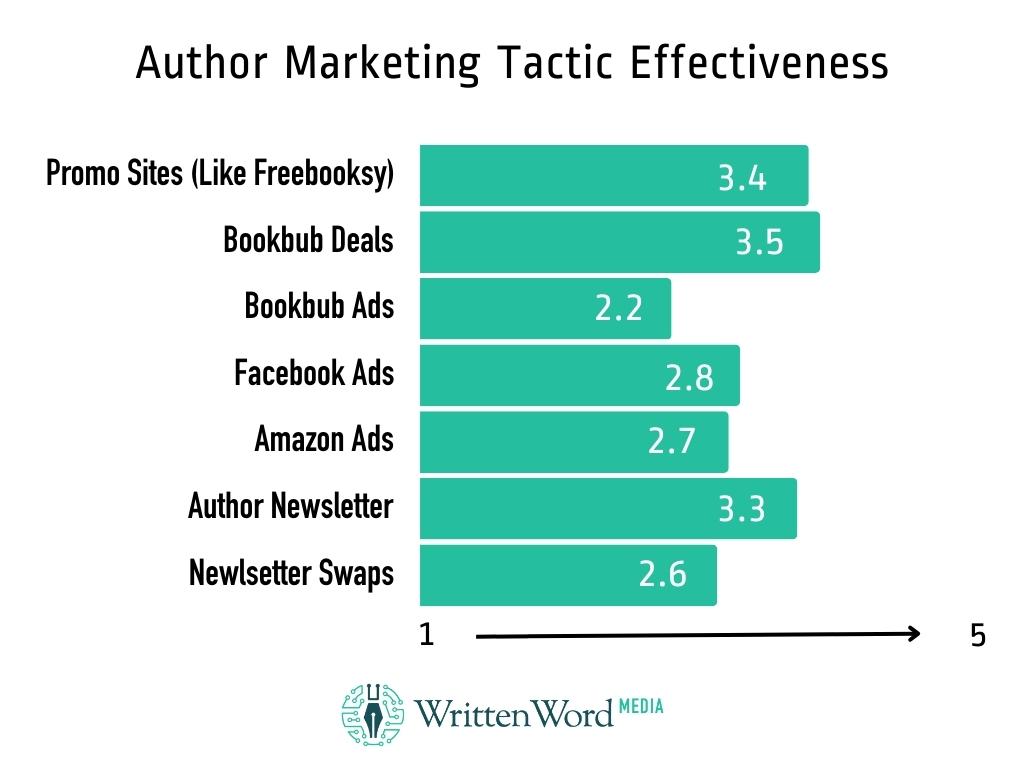
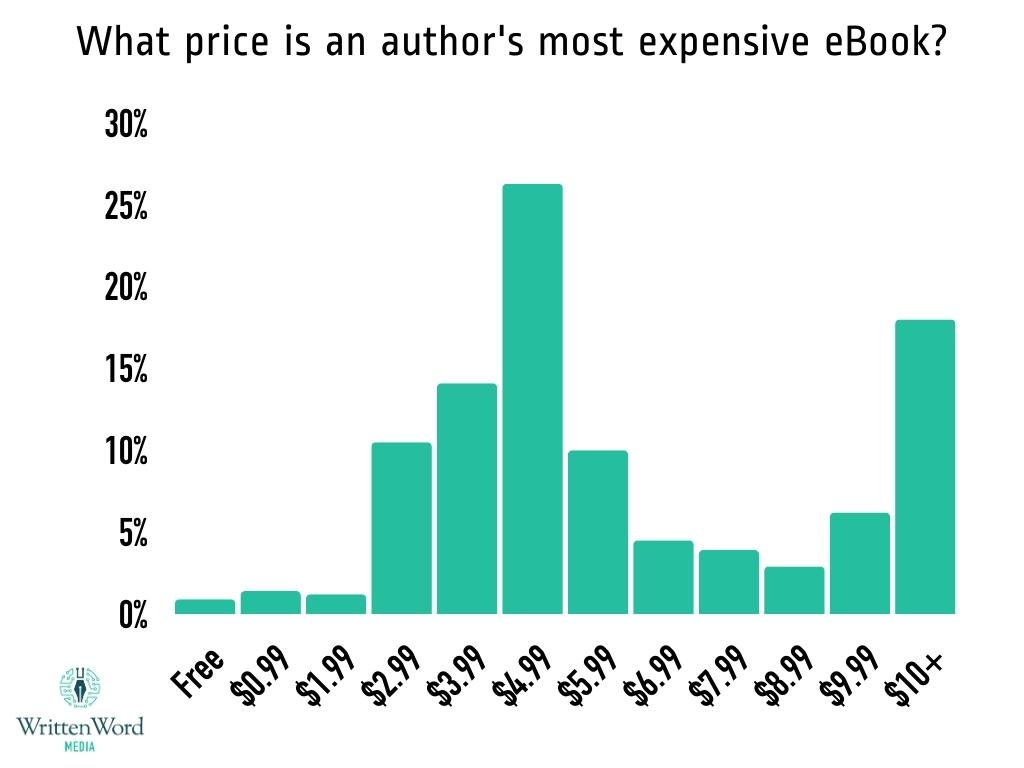
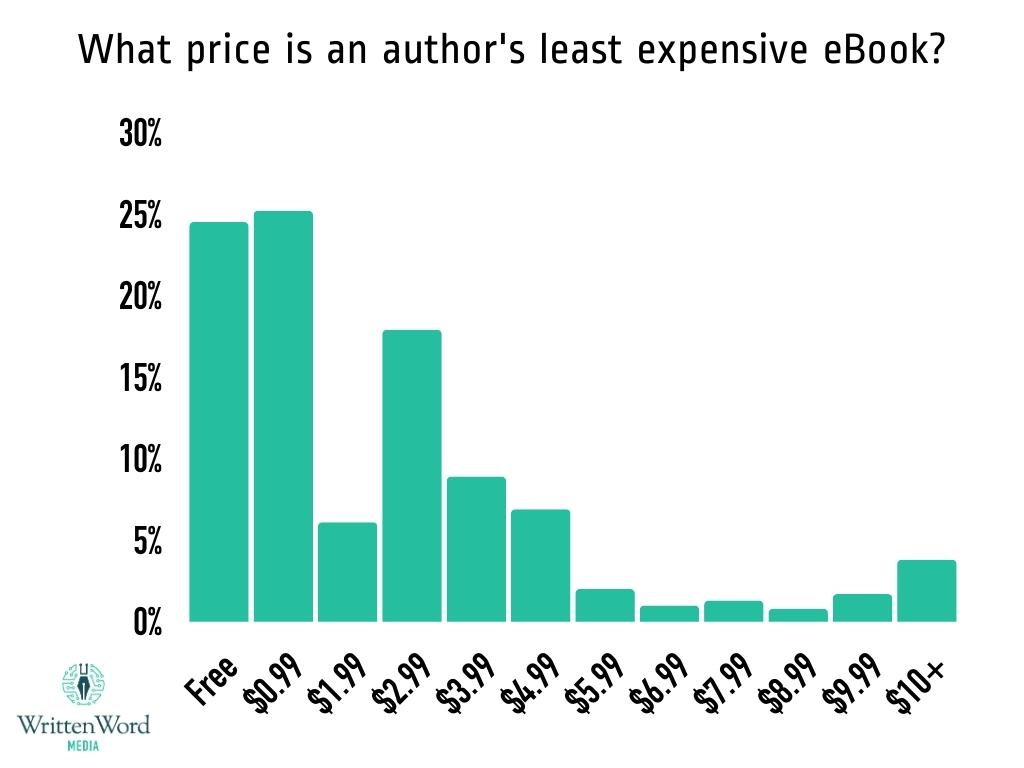
I know the number of respondants who are wide is probably only half of what you’re getting, but I’d love to know more about how other authors are utilizing Kobo Plus / how Kobo Plus factors into their income!
Great point! Something to add for next year.
This was really helpful, and confirmed some things I was only guessing at, like the price range for an editor. One question you might add: do you use a service like Reedsy or do you contract the editor and artist yourself?
I found my own editor. Personal recommendations are useful – ask around and there are recommended editors on The Alliance of Independent Authors website. BUT the one piece of advice I would give is to ask for a sample edit before signing a contract. A decent, professional editor should be willing to provide this for free – it helps you to know the quality of their editing skill and it helps them to see how much work editing your book would involve and thus to give an accurate quote for the job. Most important is to find someone who will do a great job, without changing your ‘voice’. It is also important to find someone who has experience in your genre.
What surprised me is that you only considered fiction books. This past year I have published one science fiction and one business book, and I’d love to see these questions answer for the biz book.
Hey Mike, the vast majority of our respondents mostly write fiction, so that’s the data we ended up with, but this is a good point. Biz books are a very different market, so it would be helpful to break this survey out for that audience. Thanks for the idea!
Thanks, this was insightful and will inform my marketing decisions through 2024
For the books written, does this include novellas, short stories, or just full novels? Is there a range of page count for said novels if so? 10 books and making $500 seems a bit low, which is why I ask, and I know the first month sales are usually much higher before a drop off, so I’m not sure what month this is from
Hey Eliza, each respondent could have taken this a little differently, but i suspect that most would include novellas in their total.
Thanks for the data and insights. Very informative and interesting!
Marketing your book seems to remain the hardest task for authors, so it was interesting to see that BookBub came first as the best marketing tactic (same as your previous year’s survey), and (yet again) other promo sites coming second. Given that BookBub rejects the majority of self-published book requests it receives, it would be great for you to delve in more detail into these other Book Promo sites. PaidAuthor and others evaluate these, so it would be great if you did the same.
Bookbub has announced in the past they offer 50/50 trad/indie spots each month and my experience as an indie backs that up.
Don’t give up applying. Took me years to snag a US one and it has been invaluable.
Thank you! Your survey was extremely helpful. I’ve self-published 10 books and still don’t have a website. That’s next on my list.
I am a beginner trying to start publishing. I will want you to guide me.
Thank you for this! Most of this was familiar, but a few findings were illuminating. This may not be possible or practical, but I wish there were some figures on Amazon rankings available; I am currently writing a literary historical fiction series (and this is only my second published book), so I never expected my rankings–ever–to be high or even respectable in my first couple outings, but my numbers have been abysmal–like tens of thousands of leagues below the Titanic: my highest ranking ever was around 55,000th on the first book, when ALL my family, friends, and colleagues bought it, and my books have mostly languished since then in the millions. This is in spite of a couple rave reviews and even a couple in-store book signings with sales. I don’t have much money for marketing. I’d love to know if possible what percentages among the cohort exist for rankings: for example, the lowest and the highest ranking each author has experienced. My most recent book was only just released on Oct. 3 and it is already in the 4 millions! And that is with a number of sales (not a bunch obviously, but also NOT 0 or even 4 or 5). Tremendously depressing. I’m also curious what the absolute bottom is: are there people whose books are ranked 15,000,000th? Or am I pretty much at the statistical rock bottom?
Thank you for this awesome article! It’s great to see what other authors are doing and to have some idea of where you stand.
Great data! Next year I’d love to see a question on whether authors make their books available by subscription platforms such as Patreon or Ream, if so whether exclusively or in combination with other sales platforms, how many subscribers they have, and what the income split is.
Thanks for the suggestion, Kath!
Well. While waiting to be approved so my post and the queries within it could be published since writing last week, I finally seem to have (mostly) answered my own question after a number of searches. According to a page on wordsrated.com:
Overall, Amazon’s store contains over 32.8 million published titles.
English language books make up 52.44% of all published titles, followed by French and German with 6.1% each.
The article, published on January 12, 2023, gives this breakdown:
Amazon currently lists 32.8 million books for sale comprising: Paperbacks 22.9m. Hardcover 8.1M. Kindle 1.2m.
That is a LOT more titles than I thought. So I guess saying I’m at the very rock bottom isn’t quite true.
Thanks for this – really interesting and given me another “to do” list to work through which is great. I second the opinion that non-fiction are poorly represented in the report. It would be good to see some specifics on this group of authors too.
This is extremely helpful. Many thanks to all!
Just came across your email. Have to admit that it was the most informative and in-depth site for writers I have come across. It has been a bit of a struggle for me as I have to support my family as well as trying to finish my book(Trilogy) along with the other issues that go into writing and publishing and sales. Any tips you may have for someone who is in the same situation as I am, would be greatly appreciated.
Thanks again.
I loved this article, i am a new author soon going to publish 3-4 books.
This article will definitely help me in my Career as an Author
Indie authors have been around long enough to cultivate massive followings and mainstream success. These days when a reader is choosing a book, “which publisher put this out?” is the last question on their mind.